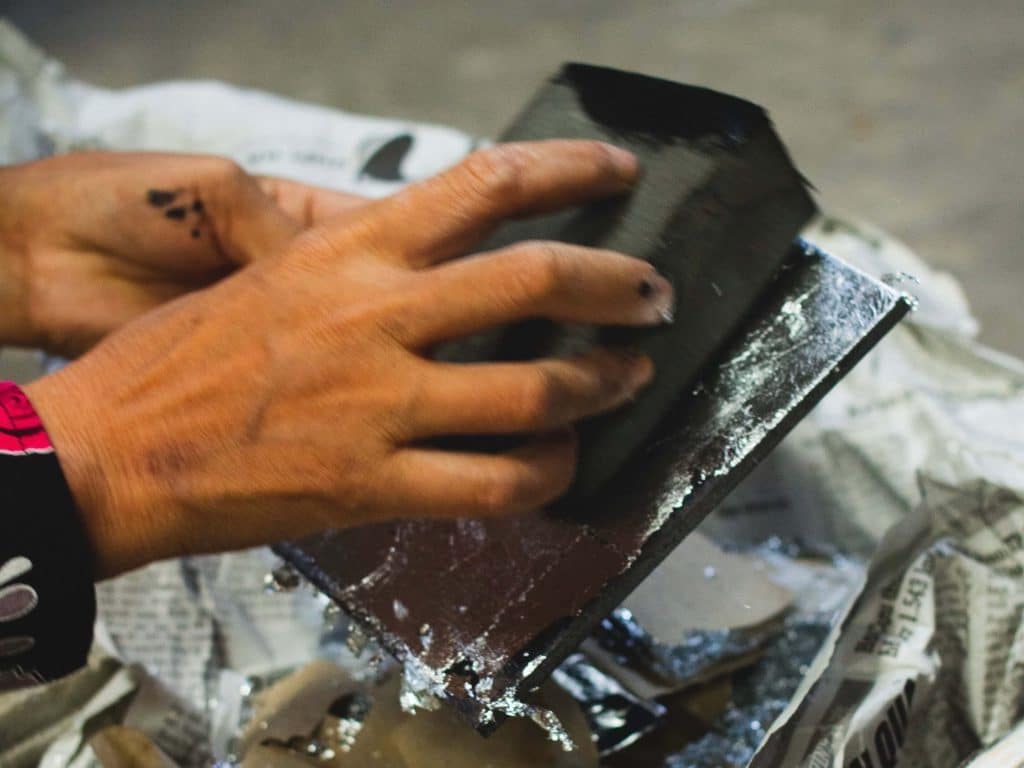Lacquerware is one of the most revered traditional crafts in Vietnam, celebrated not only for its aesthetic beauty but also for its intricate production process. As the market for lacquer products grows, so does the prevalence of counterfeit items.
Understanding how to distinguish authentic lacquer from imitations is crucial for collectors and enthusiasts alike. In this post, we will explore the characteristics of genuine Vietnamese lacquerware, the layered process behind its creation, and the unique elements that contribute to its unmatched beauty.
Table of Contents
- The Art of Lacquerware: A Brief Overview
- Layer by Layer: The Crafting Process
- The Unique Characteristics of Authentic Lacquer
- Complicated Finishes: The Artistry Behind Authentic Lacquer
- How to Identify Authentic Lacquerware
- Related Content
The Art of Lacquerware: A Brief Overview
Vietnamese lacquerware has a rich history that dates back thousands of years. The craft involves applying layers of natural lacquer derived from the sap of the lacquer tree (Toxicodendron vernicifluum).
This sap is known for its durability and glossy finish, making it ideal for decorative items such as bowls, vases, and furniture. The artistry involved in creating lacquerware is not just about aesthetics; it is a meticulous process that requires skill, patience, and a deep understanding of materials.
Layer by Layer: The Crafting Process
The Importance of Layers
Authentic lacquerware is built upon a foundation of layers. Each piece can undergo up to 30 layers of lacquer, with each layer requiring careful application and drying time.
This multi-layered approach is what gives genuine lacquer its distinctive depth, iridescence, and shine. In contrast, counterfeit lacquer products often consist of only a few layers, which results in a flat, dull appearance that lacks the richness of authentic lacquer.
Achieving Smoothness
One of the essential aspects of creating authentic lacquerware is the smoothness of the surface beneath the lacquer. Real lacquer requires a clay base that is meticulously smoothed out before the lacquer is applied.
This clay layer acts as a foundation, ensuring that the lacquer adheres properly and provides a flawless finish. Counterfeit versions, on the other hand, may skip this crucial step, leading to a rough or uneven surface that compromises the overall quality.
The Finishing Touches
The finishing process for authentic lacquerware is intricate and time-consuming. After applying each layer of lacquer, artisans must sand the surface to achieve a smooth texture before adding the next layer.
This sanding process can be repeated multiple times, contributing to the total number of steps involved in creating a piece. In contrast, fake lacquerware may only involve a handful of steps, often resulting in a product that feels rushed and lacks the depth found in genuine items.

The Unique Characteristics of Authentic Lacquer
Iridescence and Depth
One of the most notable features of authentic Vietnamese lacquerware is its iridescence. This shimmering quality is achieved through the careful layering of lacquer, which reflects light in a way that creates depth and dimension.
The interplay of light and shadow on a well-crafted piece is something that cannot be replicated with fake lacquer. Counterfeit items often appear flat and lifeless, lacking the vibrant glow that characterizes true lacquerware.
The Use of Gold and Silver Leafing
Authentic Vietnamese lacquerware frequently incorporates gold and silver leafing into its designs. This technique adds a luxurious touch and enhances the overall aesthetic appeal of the piece.
The application of gold and silver leaf requires a high level of skill, as artisans must ensure that the metal is applied evenly and integrated seamlessly into the lacquer layers. In contrast, fake lacquer products typically do not use real gold or silver, opting instead for metallic paints that lack the same richness and authenticity.
Mother of Pearl Inlay
Another hallmark of genuine Vietnamese lacquerware is the use of mother of pearl inlay. This technique involves embedding pieces of mother of pearl into the lacquer surface, creating stunning designs that catch the light beautifully.
The iridescent quality of mother of pearl complements the lacquer’s glossy finish, resulting in a piece that is truly one-of-a-kind. Counterfeit items may attempt to mimic this effect using synthetic materials, but they fail to capture the natural beauty and complexity of real mother of pearl.
Complicated Finishes: The Artistry Behind Authentic Lacquer
The complexity of finishes in authentic lacquerware is a testament to the skill of the artisans who create them. Each piece tells a story through its layers, colors, and textures. The process of layering lacquer, sanding, and refining requires not only technical expertise but also an artistic vision.
This is why authentic lacquerware is often considered a form of art rather than just a decorative item.

The Role of Tradition
The methods used in creating authentic lacquerware have been passed down through generations, preserving the cultural heritage of Vietnam. Artisans are trained in traditional techniques, ensuring that each piece reflects the rich history and craftsmanship of Vietnamese culture.
This dedication to tradition is what sets authentic lacquer apart from mass-produced imitations, which often prioritize speed and profit over quality.
How Things Are Made – Vietnamese Lacquerware
How to Identify Authentic Lacquerware
Visual Inspection
When evaluating lacquerware, start with a visual inspection. Look for the following signs of authenticity:
- Depth and Shine: Authentic lacquer should have a deep, glossy finish that reflects light beautifully. If the surface appears dull or flat, it may be a sign of counterfeit lacquer.
- Layering: Examine the edges and surfaces for signs of layering. Genuine lacquerware should show evidence of multiple layers, while fake items may look overly smooth or lack variation.
Feel the Surface
Genuine lacquerware should feel smooth to the touch, with no rough patches or imperfections. If you can feel inconsistencies or bumps, it may indicate that the lacquer was not applied properly or that the base was not adequately prepared.
Check for Inlays and Leafing
Inspect the details of the piece for gold or silver leafing and mother of pearl inlays. Authentic pieces will have these elements integrated seamlessly into the design, while counterfeit items may use paint or synthetic materials that lack the same depth and quality.
Ask About the Production Process
If you’re purchasing lacquerware from a vendor, don’t hesitate to ask about the production process. Authentic artisans are usually proud of their craftsmanship and can provide insights into how their products are made.
Look for vendors who emphasize traditional techniques and the use of high-quality materials.
Cracking the lacquer code is essential for anyone looking to appreciate the beauty of authentic Vietnamese lacquerware. By understanding the intricate process behind its creation and recognizing the unique characteristics that set genuine lacquer apart from imitations, you can make informed choices when purchasing these exquisite pieces.
Remember that authentic lacquerware is not just a product; it is a reflection of the artistry, patience, and tradition that have shaped Vietnamese culture for centuries. Embrace the beauty of lacquerware and support the artisans who dedicate their lives to preserving this timeless craft.
Deep Dive Podcast on Cracking the Lacquer Code
Join us for a Deep Dive Podcast about how to Crack the Lacquer code and spot the real lacquer from the fake.
Find out more about how Mondoro can help you create, develop, and manufacture excellent home decor and home furniture products – including lacquer furniture. Don’t hesitate to contact me, Anita. Check out my email by clicking here or become a part of our community and join our newsletter by clicking here.
Mondoro gives out a FREE Lookbook to anyone interested. You can receive a copy of our latest Lookbook by clicking here.
Listen to our Podcast called Global Trade Gal. You can find it on all major podcast platforms. Try out listening to one of our podcasts by clicking here.
Subscribe to our Mondoro Company Limited YouTube Channel filled with great videos and information by clicking here.
Related Content
Hardwood Solids Furniture, What Does The Term Mean?
Hardwood solids can include non-solid woods such as engineered woods. Hardwood solids are used in furniture and other industries to classify what wood is used in a product. The terms usually do not classify what type of wood is used.
You can discover more by reading Hardwood Solids Furniture, What Does The Term Mean? by clicking here.
Differences Between Solid Wood, Plywood, Pressboard, And OSB?
Solid wood is wood cut from a tree and made into products; plywoodred engineered wood. Pressboard is made from paper, including recycled paper. OSB is also known as Oriented Strand Board, and because of its strength is used a lot in roofing, housing, and floors.
You can discover more by reading our blog Differences Between Solid Wood, Plywood, Pressboard, And OSB? by clicking here.
What Is Solid Wood Vs. Engineered Wood?
Solid wood is cut down from the tree, cut into wood boards, and used for manufacturing. On the other hand, engineered wood is considered manmade as it is usually manufactured with wood chips, wood shavings, and an adhesive. Today the manufacturing of engineered wood is highly technical.
You can discover more by reading our blog All About Teak Wood And Outdod? by clicking here.

